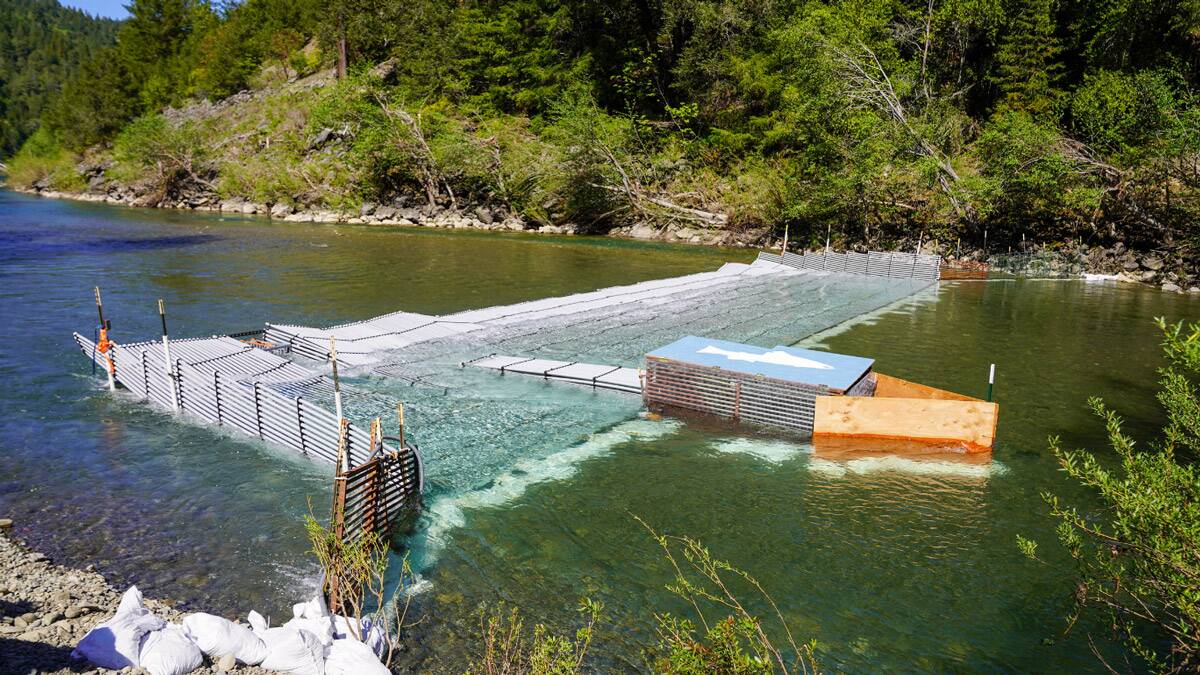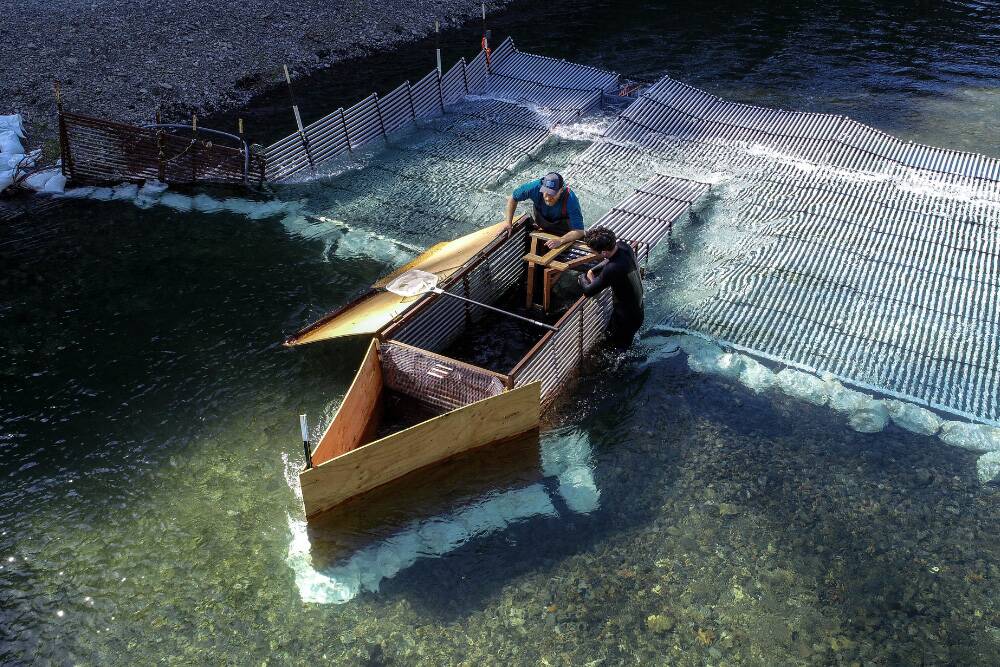In addition to direct predation, they also compete with salmonids in other ways. Pikeminnows are in direct competition for related food sources that juvenile salmon and steelhead would eat such as insects. Plus, the presence of pikeminnow can change salmonid behavior in different stages of their life histories. They can determine which sections of river or even which specific pools young salmonids can occupy or must avoid. In the past several decades that means much of the lower mainstem of the Eel River has been off limits to many salmonids for most of the spring, summer, and fall.
Many solutions were kicked around the table and ultimately groups decided to experiment with a fish weir. Weir technology is nothing new in the fish world and dates back for centuries. Native peoples all around the globe have used different types of weirs to trap fishes in moving bodies of water. The technology has been recorded in use for over 20,000 years! A Technical Advisory Committee including CDFW, CalTrout, the Wiyot Tribe, Stillwater Sciences, McBain and Associates, and others was formed to take on this task together. CalTrout applied for funding and received grant money to implement the weir project on the South Fork Eel River starting in spring of 2023.
When I visited the site in late April, the weir was already fully constructed and operational. Its construction had been planned for even earlier, but extremely wet winter conditions didn’t allow for construction until late into April on the South Fork Eel. It was great to see it in action!
A recent revelation in the study of pikeminnow suggests that a large percentage of them migrate throughout the system at different times of year. Acoustic telemetry tracking equipment has allowed scientist to more accurately study the movements of fish throughout the systems. Through this research it was determined that a large percentage of animals seem to move downstream in the winter and favor the deeper slower pools in the mainstem. Come summer, they migrate back upstream on a foraging run and potentially to spawn.

Recently installed, the pikeminnow weir is designed to let fish pass through a chute as they move downstream from above the weir. All fish migrating upstream are herded into a pen structure where they can be captured. Native fish are then passed back upstream and non-native fish can be removed from the system.
This is the first time such technology has been deployed in the Eel River system, and the project has a lot to learn. If the results are positive then we hope it’s something that can continue into the future to aid our native fish recovery.
“If we can increase smolt survival and increase smolt growth, which has a big impact on ocean survival, and if we can decrease pikeminnow predation and interaction with the native fish, we are hopeful it can make a big difference,” says Gabe Rossi, Ph.D., who holds a CalTrout/UC Berkeley joint scientist position focusing on North Coast fisheries. Rossi is overseeing the project this summer with close consultation with CDFW and CalTrout’s North Coast team, and support from field technician Keane Flynn, a graduate student at University of Nevada, Reno.
In addition to capturing and passing fish, Rossi and Flynn are also hoping to collect as much data as possible about the population densities and movements of all fish throughout the South Fork Eel River aquatic ecosystem. Much of this data comes from a camera that is attached to the weir. This camera monitors all fish that come up and down and records them in a database. Scientist can then review the information and have an accurate picture of how many, and which species are passing up and down the river.
One of the most exciting developments in this type of science is the deployment of artificial intelligence (AI) technology in counting fish. Historically, a technician would have to sit in front of the computer for many hours and take visual notes of the fish that have passed by. Using new AI software, algorithms are now learning to identify and count species autonomously. This is breakthrough technology and will vastly improve our knowledge of fisheries monitoring in a shorter time period!
"If we can decrease pikeminnow predation and interaction with the native fish, we are hopeful it can make a big difference."
DR. GABE ROSSI

Field technician Keane Flynn, a graduate student at University of Nevada, Reno, snorkels in the Eel River.

Dr. Gabe Rossi and Keane Flynn examine the weir.
We are also engaged in an acoustic telemetry tracking study. For this study, baby salmon are fitted with a small Juvenile Salmon Acoustic Telemetry System (JSATS) tag that are detected by receivers installed throughout the system. When a tagged fish swims by a receiver, the signal is recorded. This information helps us identify how fast fish move down the river, how many fish are making the journey, and what some of the threats they face along the way might be.
As we combine this information, we can build a greater understanding of fish survival throughout the South Fork Eel River mainstem. The data we collect will help guide future management decisions and restoration actions.
CalTrout is fully committed to helping restore the Eel River from headwaters to sea. At Potter Valley, we are deeply engaged in efforts to remove the Eel River dams. We believe that dam removal is one of the greatest actions that can be taken in the Eel basin to aid in long term recovery of native fish and preserve its true natural heritage as a strong salmon and steelhead producing ecosystem.
This article was updated on November 20, 2023.






